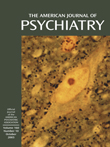Abstract
OBJECTIVE: The authors used color photographs of emotional and neutral expressions to investigate recognition patterns of five universal emotions in schizophrenia. METHOD: Twenty-eight stable outpatients with schizophrenia (19 men and nine women) and 61 healthy subjects (29 men and 32 women) completed an emotion discrimination test that presented mild and extreme intensities of happy, sad, angry, fearful, disgusted, and neutral faces, balanced for gender and ethnicity. Analyses evaluated accuracy of identifying emotions as a function of intensity, diagnosis, and gender of poser and rater. RESULTS: Patients performed worse than comparison subjects on recognition of all emotions and neutral faces combined, including mild and extreme expressions. For specific emotions, patients performed worse on recognition of fearful, disgusted, and neutral expressions. For all emotions except disgust, recognition of extreme intensity was better than recognition of mild intensity. However, patients showed less benefit from increased intensity for all emotions combined, and the difference was most pronounced for fear. Thus, patients were more impaired than healthy comparison subjects in identifying high-intensity expressions, even though this was an easier task than identifying low-intensity expressions. In the comparison of patterns of errors, patients and healthy subjects differed only in misattributions of neutral expressions; patients overattributed disgusted expressions and underattributed happy expressions. CONCLUSIONS: Patients with schizophrenia were impaired in overall emotion recognition, particularly fear and disgust, and did not benefit from increased emotional intensity. Error patterns indicate that patients misidentified neutral cues as negatively valenced.



